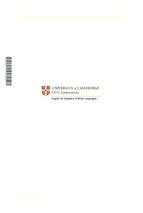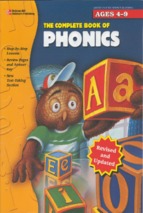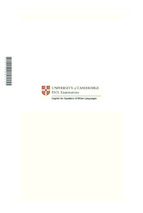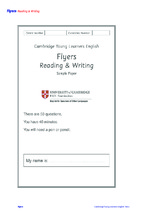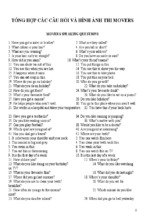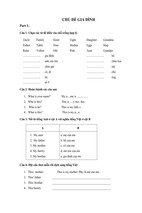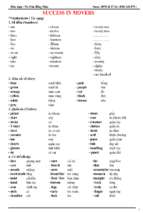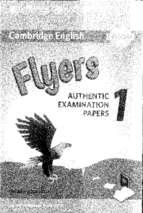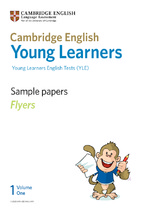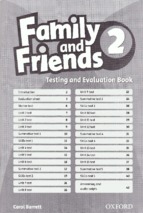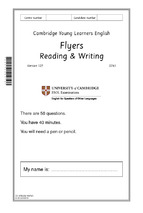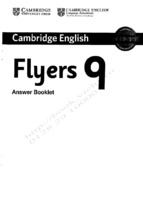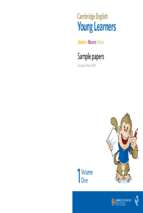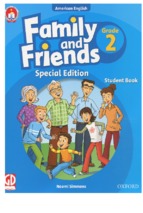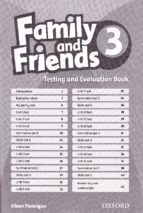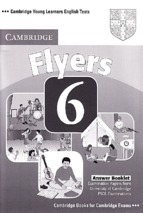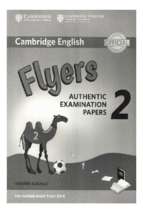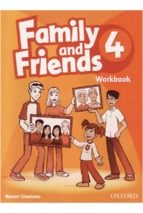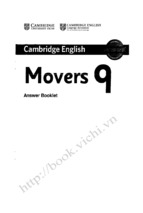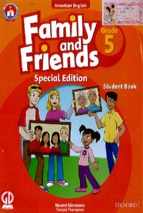Grade 4
Interactive Notebooks
CD-104950
Interactive Notebooks: Word Study
Interactive notebooks are an engaging new way to teach and reinforce effective note
taking in a creative and personalized way. Students are able to take an active role
in their learning as they create fun, interactive notebook pages for each new word
study topic. Students will learn organization, color-coding, summarizing, and other
useful skills while creating portfolios of individual learning that they will refer back to
all year long. This book will guide you through setting up, creating, and maintaining
interactive notebooks throughout the year. It is an invaluable resource for anyone
who wants to begin using this effective tool for skill retention in the classroom.
Interactive Notebooks
Grade
4
Look for these and other great Carson-Dellosa titles to
support standards-based instruction in the classroom.
Interactive Notebooks
Math
Grade 4
CD-104649
Interactive Notebooks
Language Arts
Grade 4
CD-104655
Interactive Notebooks
Science
Grade 4
CD-104908
• Ideal for organizing
information and
applying learning
carsondellosa.com
104950 CO 4.indd 1-3
CD-104950
Carson-Dellosa Publishing LLC
PO Box 35665 • Greensboro, NC 27425 USA
CARSON-DELLOSA
Visit
learningspotlibrary.com
for FREE activities!
• Perfect for
addressing the
needs of individual
learners
• Includes step-by-step
instructions for
each page
• Great for
introducing new
word study topics
12/5/16 12:58 PM
Grade 4
Credits
Content Editors: Elise Craver, Angela Triplett
Visit carsondellosa.com for correlations to Common Core, state, national, and Canadian provincial standards.
Carson-Dellosa Publishing, LLC
PO Box 35665
Greensboro, NC 27425 USA
carsondellosa.com
© 2017, Carson-Dellosa Publishing, LLC. The purchase of this material entitles the buyer to reproduce worksheets
and activities for classroom use only—not for commercial resale. Reproduction of these materials for an entire
school or district is prohibited. No part of this book may be reproduced (except as noted above), stored in a
retrieval system, or transmitted in any form or by any means (mechanically, electronically, recording, etc.) without
the prior written consent of Carson-Dellosa Publishing, LLC.
104950 INT 4.indd 1
978-1-4838-4002-4
12/6/16 2:33 PM
Table of Contents
What Are Interactive Notebooks?. . . . . . . . .3
Word Parts
Getting Started. . . . . . . . . . . . . . . . . .4
Prefixes* . . . . . . . . . . . . . . . . . . 46
What Type of Notebook Should I Use? . . . . . .5
Suffixes* . . . . . . . . . . . . . . . . . . 52
How to Organize an Interactive Notebook. . . . 6
Word Roots*. . . . . . . . . . . . . . . . 58
Planning for the Year . . . . . . . . . . . . . . .8
Using Affixes and Roots. . . . . . . . . . . 66
Managing Interactive Notebooks
in the Classroom . . . . . . . . . . . . . . . . 10
Inflectional Endings* . . . . . . . . . . . . 68
Plural Nouns. . . . . . . . . . . . . . . . 72
Interactive Notebook Grading Rubric. . . . . . 11
Homographs. . . . . . . . . . . . . . . . 74
High Frequency Words
Homophones. . . . . . . . . . . . . . . . 76
Practicing High Frequency Words* . . . . . 12
Using High Frequency Words. . . . . . . . 16
Spelling Patterns
Reproducibles
Tabs. . . . . . . . . . . . . . . . . . . . . 78
KWL Chart . . . . . . . . . . . . . . . . . 79
Words with R-Controlled Vowels . . . . . . 18
Pockets. . . . . . . . . . . . . . . . . . . 80
Vowel Teams*. . . . . . . . . . . . . . . . 20
Shutter Folds. . . . . . . . . . . . . . . . 83
Pronouncing “ough”. . . . . . . . . . . . . 24
Flap Books and Flaps . . . . . . . . . . . . 85
Spelling: The /k/ Sound . . . . . . . . . . . 26
Petal Folds. . . . . . . . . . . . . . . . . 90
Spelling: -ion . . . . . . . . . . . . . . . 28
Accordion Folds. . . . . . . . . . . . . . . 92
Spelling: -able and -ible. . . . . . . . . . . 30
Clamshell Fold. . . . . . . . . . . . . . . 94
Syllabication Patterns
Syllables . . . . . . . . . . . . . . . . . . 32
Puzzle Pieces. . . . . . . . . . . . . . . . 95
Flip Book. . . . . . . . . . . . . . . . . . 96
Syllabication Rules*. . . . . . . . . . . . . 34
Stressed and Unstressed Syllables . . . . . . 40
*These lessons include multiple reproducible pages. They are designed to introduce one or more
concepts at a time, and can be taught over time. Once assembled, they will use multiple pages in a
student’s interactive notebook.
2
104950 INT 4.indd 2
© Carson-Dellosa • CD-104950
Using Stressed and Unstressed Syllables*. . 42
12/6/16 2:33 PM
What Are Interactive Notebooks?
Interactive notebooks are a unique form of note taking. Teachers guide students through creating
pages of notes on new topics. Instead of being in the traditional linear, handwritten format, notes are
colorful and spread across the pages. Notes also often include drawings, diagrams, and 3-D elements
to make the material understandable and relevant. Students are encouraged to complete their
notebook pages in ways that make sense to them. With this personalization, no two pages are exactly
the same.
Because of their creative nature, interactive notebooks allow students to be active participants
in their own learning. Teachers can easily differentiate pages to address the levels and needs of each
learner. The notebooks are arranged sequentially, and students can create tables of contents as they
create pages, making it simple for students to use their notebooks for reference throughout the year.
The interactive, easily personalized format makes interactive notebooks ideal for engaging students in
learning new concepts.
describe
scribble
biography
graphite
autograph
Using interactive notebooks can take as much or as little time as you like. Students will initially
take longer to create pages but will get faster as they become familiar with the process of creating
pages. You may choose to only create a notebook page as a class at the beginning of each unit, or
you may choose to create a new page for each topic within a unit. You can decide what works best
for your students and schedule.
Word Roots
rite
to w
regraphing – rewriting a draft
to w
0
• CD-10495
scributary – a person whose job is to
write neatly
rite
I was regraphing my essay before I
turned in the final copy.
llosa
© Carson-De
© Carson-Dellosa • CD-104950
104950 INT 4.indd 3
Word Roots
graphite
biography
My handwriting is messy, so I needed a
scributary to make my notes clear.
60
autograph
to write or draw
in a messy way
describe
scribbulous – very messy
I couldn’t turn in my homework because
my little brother made it scribbulous!
scribe
a writer
or recorder
of a group
A student’s interactive notebook for word roots
3
12/6/16 2:33 PM
Getting Started
You can start using interactive notebooks at any point in the school year. Use the following
guidelines to help you get started in your classroom. (For more specific details, management ideas,
and tips, see page 10.)
1. Plan each notebook.
Use the planning template (page 9) to lay out a general plan for the topics you plan to cover
in each notebook for the year.
2. Choose a notebook type.
Interactive notebooks are usually either single-subject, spiral-bound notebooks,
composition books, or three-ring binders with loose-leaf paper. Each type presents pros
and cons. See page 5 for a more in-depth look at each type of notebook.
3. Allow students to personalize their notebooks.
Have students decorate their notebook covers, as well as add their names and subjects.
This provides a sense of ownership and emphasizes the personalized nature of the
notebooks.
4. Number the pages and create the table of contents.
Have students number the bottom outside corner of each page, front and back. When
completing a new page, adding a table of contents entry will be easy. Have students title
the first page of each notebook “Table of Contents.” Have them leave several blank pages
at the front of each notebook for the table of contents. Refer to your general plan for an
idea of about how many entries students will be creating.
5. Start creating pages.
Always begin a new page by adding an entry to the table of contents. Create the first
notebook pages along with students to model proper format and expectations.
After introducing topics, you may choose to add more practice pages. Use the reproducibles
(pages 78−96) to easily create new notebook pages for practice or to introduce topics not addressed
in this book.
Use the grading rubric (page 11) to grade students’ interactive notebooks at various points
throughout the year. Provide students copies of the rubric to glue into their notebooks and refer to as
they create pages.
4
104950 INT 4.indd 4
© Carson-Dellosa • CD-104950
This book contains individual topics for you to introduce. Use the pages in the order that best
fits your curriculum. You may also choose to alter the content presented to better match your school’s
curriculum. The provided lesson plans often do not instruct students to add color. Students should
make their own choices about personalizing the content in ways that make sense to them. Encourage
students to highlight and color the pages as they desire while creating them.
12/6/16 2:33 PM
What Type of Notebook
Should I Use?
Spiral Notebook
The pages in this book are formatted for a standard one-subject notebook.
Pros
Cons
•
•
•
•
Notebook can be folded in half.
Page size is larger.
It is inexpensive.
It often comes with pockets for storing
materials.
•
•
•
•
Pages can easily fall out.
Spirals can snag or become misshapen.
Page count and size vary widely.
It is not as durable as a binder.
Tips
• Encase the spiral in duct tape to make it more durable.
• Keep the notebooks in a central place to prevent them from getting damaged in desks.
Composition Notebook
Pros
Cons
• Pages don’t easily fall out.
• Page size and page count are standard.
• It is inexpensive.
• Notebook cannot be folded in half.
• Page size is smaller.
• It is not as durable as a binder.
Tips
• Copy pages meant for standard-sized notebooks at 85 or 90 percent. Test to see which works
better for your notebook.
Binder with Loose-Leaf Paper
© Carson-Dellosa • CD-104950
Pros
Cons
• Pages can be easily added, moved, or
removed.
• Pages can be removed individually for
grading.
• You can add full-page printed handouts.
• It has durable covers.
•
•
•
•
Pages can easily fall out.
Pages aren’t durable.
It is more expensive than a notebook.
Students can easily misplace or lose
pages.
• Larger size makes it more difficult to
store.
Tips
104950 INT 4.indd 5
• Provide hole reinforcers for damaged pages.
5
12/6/16 2:33 PM
How to Organize an
Interactive Notebook
You may organize an interactive notebook in many different ways. You may choose to organize
it by unit and work sequentially through the book. Or, you may choose to create different sections
that you will revisit and add to throughout the year. Choose the format that works best for your
students and subject.
An interactive notebook includes different types of pages in addition to the pages students
create. Non-content pages you may want to add include the following:
Title Page
This page is useful for quickly identifying notebooks. It is especially helpful in classrooms
that use multiple interactive notebooks for different subjects. Have students write the
subject (such as “Word Study”) on the title page of each interactive notebook. They should
also include their full names. You may choose to have them include other information such
as the teacher’s name, classroom number, or class period.
Table of Contents
The table of contents is an integral part of the interactive notebook. It makes referencing
previously created pages quick and easy for students. Make sure that students leave several
pages at the beginning of each notebook for a table of contents.
Expectations and Grading Rubric
It is helpful for each student to have a copy of the expectations for creating interactive
notebook pages. You may choose to include a list of expectations for parents and students
to sign, as well as a grading rubric (page 11).
Unit Title Pages
Consider using a single page at the beginning of each section to separate it. Title the page
with the unit name. Add a tab (page 78) to the edge of the page to make it easy to flip to
the unit. Add a table of contents for only the pages in that unit.
Reserve a six-page section at the back of the notebook where students can create a
glossary. Draw a line to split in half the front and back of each page, creating 24 sections.
Combine Q and R and Y and Z to fit the entire alphabet. Have students add an entry as
each new vocabulary word is introduced.
6
104950 INT 4.indd 6
© Carson-Dellosa • CD-104950
Glossary
12/6/16 2:33 PM
Formatting Student Notebook Pages
The other major consideration for planning an interactive notebook is how to treat the left and
right sides of a notebook spread. Interactive journals are usually viewed with the notebook open flat.
This creates a left side and a right side. You have several options for how to treat the two sides of the
spread.
Traditionally, the right side is used for the teacher-directed part of the lesson, and the left side
is used for students to interact with the lesson content. The lessons in this book use this format.
However, you may prefer to switch the order for your class so that the teacher-directed learning is on
the left and the student input is on the right.
It can also be important to include standards, learning objectives, or essential questions in
interactive notebooks. You may choose to write these on the top-left side of each page before
completing the teacher-directed page on the right side. You may also choose to have students include
the “Introduction” part of each lesson in that same top-left section. This is the in, through, out
method. Students enter in the lesson on the top left of the page, go through the lesson on the right
page, and exit out of the lesson on the bottom left with a reflection activity.
The following chart details different types of items and activities that you could include on
each side.
Left Side
Right Side
• learning objectives
• vocabulary and definitions
• essential questions
• mini-lessons
• I Can statements
• folding activities
• brainstorming
• steps in a process
• making connections
• example problems
• summarizing
• notes
• making conclusions
• diagrams
• practice problems
• graphic organizers
• opinions
• hints and tips
• questions
• big ideas
© Carson-Dellosa • CD-104950
• mnemonics
104950 INT 4.indd 7
• drawings and diagrams
7
12/6/16 2:33 PM
Planning for the Year
Making a general plan for interactive notebooks will help with planning, grading, and testing
throughout the year. You do not need to plan every single page, but knowing what topics you will
cover and in what order can be helpful in many ways.
Use the Interactive Notebook Plan (page 9) to plan your units and topics and where they should
be placed in the notebooks. Remember to include enough pages at the beginning for the non-content
pages, such as the title page, table of contents, and grading rubric. You may also want to leave a page
at the beginning of each unit to place a mini table of contents for just that section.
In addition, when planning new pages, it can be helpful to sketch the pieces you will need to
create. Use the following notebook template and notes to plan new pages.
Left Side
Right Side
Notes
_______________________________________________________________________________
_______________________________________________________________________________
_______________________________________________________________________________
8
104950 INT 4.indd 8
© Carson-Dellosa • CD-104950
12/6/16 2:33 PM
© Carson-Dellosa • CD-104950
Interactive Notebook Plan
Page
1
2
3
4
5
6
7
8
9
10
11
12
13
14
15
16
17
18
19
20
21
22
23
24
25
26
27
28
29
30
31
32
33
34
35
36
37
38
39
40
41
42
43
44
45
46
47
48
49
50
104950 INT 4.indd 9
Topic Topic
Topic
Page
51
52
53
54
55
56
57
58
59
60
61
62
63
64
65
66
67
68
69
70
71
72
73
74
75
76
77
78
79
80
81
82
83
84
85
86
87
88
89
90
91
92
93
94
95
96
97
98
99
100
Topic Topic
Topic
9
12/6/16 2:33 PM
Managing Interactive
Notebooks in the Classroom
Working with Younger Students
• Use your yearly plan to preprogram a table of contents that you can copy and give to
students to glue into their notebooks, instead of writing individual entries.
• Have assistants or parent volunteers precut pieces.
• Create glue sponges to make gluing easier. Place large sponges in plastic containers with
white glue. The sponges will absorb the glue. Students can wipe the backs of pieces across
the sponges to apply the glue with less mess.
Creating Notebook Pages
• For storing loose pieces, add a pocket to the inside back cover. Use the envelope pattern
(page 81), an envelope, a jumbo library pocket, or a resealable plastic bag. Or, tape the
bottom and side edges of the two last pages of the notebook together to create a large
pocket.
• When writing under flaps, have students trace the outline of each flap so that they can
visualize the writing boundary.
• Where the dashed line will be hidden on the inside of the fold, have students first fold the
piece in the opposite direction so that they can see the dashed line. Then, students should
fold the piece back the other way along the same fold line to create the fold in the correct
direction.
• To avoid losing pieces, have students keep all of their scraps on their desks until they have
finished each page.
• To contain paper scraps and avoid multiple trips to the trash can, provide small groups with
small buckets or tubs.
• For students who run out of room, keep full and half sheets available. Students can glue these
to the bottom of the pages and fold them up when not in use.
Dealing with Absences
• Have students cut a second set of pieces as they work on their own pages.
Using the Notebook
• To organize sections of the notebook, provide each student with a sheet of tabs (page 78).
• To easily find the next blank page, either cut off the top-right corner of each page as it is
used or attach a long piece of yarn or ribbon to the back cover to be used as a bookmark.
10
104950 INT 4.indd 10
© Carson-Dellosa • CD-104950
• Create a model notebook for absent students to reference when they return to school.
12/6/16 2:33 PM
Interactive Notebook Grading Rubric
������� Table of contents is complete.
������� All notebook pages are included.
4
������� All notebook pages are complete.
������� Notebook pages are neat and organized.
������� Information is correct.
������� Pages show personalization, evidence of learning, and original ideas.
������� Table of contents is mostly complete.
������� One notebook page is missing.
3
������� Notebook pages are mostly complete.
������� Notebook pages are mostly neat and organized.
������� Information is mostly correct.
������� Pages show some personalization, evidence of learning, and original ideas.
������� Table of contents is missing a few entries.
������� A few notebook pages are missing.
2
������� A few notebook pages are incomplete.
������� Notebook pages are somewhat messy and unorganized.
������� Information has several errors.
������� Pages show little personalization, evidence of learning, or original ideas.
������� Table of contents is incomplete.
© Carson-Dellosa • CD-104950
������� Many notebook pages are missing.
1
104950 INT 4.indd 11
������� Many notebook pages are incomplete.
������� Notebook pages are too messy and unorganized to use.
������� Information is incorrect.
������� Pages show no personalization, evidence of learning, or original ideas.
11
12/6/16 2:33 PM
Practicing High Frequency Words
Introduction
Practicing High
Frequency Words
emselves
thwhisper
compare
caught
anything
interest
sev
era
dif ferencl e
Explain that high frequency words are words that appear
frequently in text. Introduce each new high frequency word by
writing it on the board. Say the word several times with the class.
Have volunteers define each word and use it in a sentence. Finally,
discuss any identifying features students see in the words, such as
affixes, roots, or spelling patterns. Discuss how categorizing high
frequency words by word parts or spelling patterns can also be
helpful in learning the words quickly.
against
anything
several
whisper
Creating the Notebook Page
Guide students through the following steps to complete the
right-hand page in their notebooks.
Someone left the
gate open again.
difference
1. Add a Table of Contents entry for the Practicing High
Frequency Words pages.
2. Cut out the title and glue it to the top of the page.
3. Cut out the pocket. Apply glue to the backs of the three tabs and attach the pocket to the
page below the title.
4. Cut out the flaps. Apply glue to the backs of the left sections and attach them to the page
below the pocket.
5. Cut out the word cards. Store the cards in the pocket.
6. For each flap, choose a word card from the pocket. Write the word on the front of the flap.
Then, dissect the word by highlighting the affixes and root or identifying the word’s spelling
pattern(s). Write a sentence with the word under the flap. Highlight the word in the sentence.
7. Pull additional words out of the pocket and practice reading and writing them. If desired, use
self-stick notes to create additional word study flaps as used in step 6 on additional pages.
To complete the left-hand page, have students choose several more word cards from the pocket to
dissect. Then, students should write a sentence with each word. Have the students read their sentences
with a partner.
12
104950 INT 4.indd 12
© Carson-Dellosa • CD-104950
Reflect on Learning
12/6/16 2:33 PM
© Carson-Dellosa • CD-104950
Practicing High
Frequency Words
104950 INT 4.indd 13
afraid
against
anything
brought
caught
compare
difference
hungry
interest
receive
remember
several
someone
themselves
whisper
Practicing High Frequency Words
13
12/6/16 2:33 PM
daily
develop
experience
heavy
instead
listen
possible
quiet
quite
solution
station
straight
suppose
though
Practicing High Frequency Words
104950 INT 4.indd 14
© Carson-Dellosa • CD-104950
14
awhile
12/6/16 2:33 PM
© Carson-Dellosa • CD-104950
104950 INT 4.indd 15
century
condition
create
decision
dependent
figure
frighten
herself
himself
material
raise
rough
sincerely
special
through
Practicing High Frequency Words
15
12/6/16 2:33 PM
Using High Frequency Words
Introduction
happened
complete
piece
discover
money
map
morning
during
however
several
animals
fall
ground
covered
remember
listen
measure
nothing
problem
today
everything
easy
fast
1. Add a Table of Contents entry for the Using High
Frequency Words pages.
2. Cut out the title and glue it to the top of the page.
3. Cut out the square piece. With the printed side up, fold
it in half so that the opposite corners meet, then unfold.
Repeat with the other two corners. You should have an
X-shaped fold. Flip the paper over so that the blank side
is faceup. Fold each corner in to meet the center. You should have a square piece with four
triangular flaps. Flip the paper over again so that the opposite side is faceup. Fold each corner
in to meet the center. You should have a smaller square with four triangular flaps. Fold the
bottom edge up to meet the top edge to create a rectangular fortune teller.
4. Place your thumbs and forefingers of both hands under the four square flaps. Gently press
your fingers together toward the center so the four corners meet in the center and the piece
becomes 3-D. It may be helpful to have a friend press down on the center during this step.
5. Cut out the pocket. Apply glue to the backs of the three tabs and attach the pocket to the
page below the title. Use the pocket to store the flattened fortune teller when not in use.
6. To use the fortune teller to practice high frequency words, choose one of the four visible
words. Say the word and spell it. For each letter, close and open the fortune teller once,
making sure to alternate directions. (Your fingers will alternate so that your thumbs meet
and your forefingers meet, then each thumb meets a forefinger.) Repeat with the next set of
words. The third time, say and spell a word from the center of the fortune teller, but don’t
move the fortune teller. After spelling the third word, open the flap to read your “fortune.”
Identify the high frequency words in the fortune.
7. During each turn, identify the high frequency words used from beginning to end and record
them on the page to practice spelling them.
Reflect on Learning
To complete the left-hand page, have students use their high frequency word lists to write several
fortunes of their own. Students should highlight the high frequency words they used in their fortunes.
16
104950 INT 4.indd 16
© Carson-Dellosa • CD-104950
Guide students through the following steps to complete the
right-hand page in their notebooks.
e
mme
ccoo
bbee
Creating the Notebook Page
Using High Frequency Words
hha
app
ppe
enn
eed
d
Copy and distribute a story (or pages from a story) that uses the
high frequency words that the class has been working with. Have
students take turns reading the story aloud. Then, have students
find and highlight the high frequency words used in the text.
12/6/16 2:33 PM
ua
e
re
m
em
be
r
ip ec
You will
discover money
and a map in the
morning. Where do
you go?
You will make
five hundred new
friends this year.
You didn’t
plan for your
whole class to win a
trip across space, did you?
Nothing will
be a problem for
you today. Everything
will be easy and fast.
h
en
list
© Carson-Dellosa • CD-104950
a
p
p
lly
104950 INT 4.indd 17
r
m
ea
en
re
u
s
ed
g
Today, you
will only be able
to speak in questions
if you want to be heard.
e
ev
ow
rin
e
lp et
m
co
Against all odds, h
you will figure out
a better way to travel.
Teleportation!
du
You will notice
a certain lucky door
and open it today.
e
l
ra
ve
se
Animals
will fall like
rain to the ground.
Stay covered!
us
be
c
o
m
rd
a
w
to
Using High Frequency Words
Using High Frequency Words
17
12/6/16 2:33 PM
Words with R -Controlled Vowels
Introduction
imp__tant
p__chase
Th__sday
!
This is
imp__tant!
anch__
c__cle
d__ty
weath__
batt__y
p__fect
That’s
wond__ful!
1. Add a Table of Contents entry for the Words with
R-Controlled Vowels pages.
2. Cut out the title and glue it to the top of the page.
3. Cut out the pockets. Apply glue to the backs of the three tabs on each pocket and attach
them to the page, leaving enough room above each pocket for adding word cards.
4. Cut out the word cards.
5. Fold the picture behind the word on the dashed line. Apply glue to the back of the picture
section and attach it to the back of the word to create a double-sided card with a picture on
the front and a word on the back.
6. Look at the picture on each card and say the word. Listen to the vowel sound. Sort the word
into the correct pocket. Discuss how some r-controlled vowels make the same sound.
7. Look at the words in each pocket. Write the r-controlled vowel in the blank on the word
card. You may need to re-sort some of the words. If needed, use a dictionary to find the
correct spelling.
8. To practice spelling r -controlled words, remove all of the cards and place them picture-side
up. Try spelling the word. Look at the word on the back of the card to check your spelling.
If you are correct, sort the word into the corresponding pocket. Repeat until all of the words
have been sorted correctly.
Wednesday,
,
Friday
w__m
ins
c__ta
wond__ful
Reflect on Learning
To complete the left-hand page, have students divide their pages into two sections and label each
section R-Controlled and Not R-Controlled. Say several words, including some r-controlled vowel
words. Students should write each word correctly in the corresponding column as you say them.
18
104950 INT 4.indd 18
© Carson-Dellosa • CD-104950
Guide students through the following steps to complete the
right-hand page in their notebooks.
ar
diction__y
Janu
a__ry
th__teen
13 b__thday
Creating the Notebook Page
Words with
-Controlled Vowels
100%
is a
score.
Write the words birthday and fireplace on the board. Have
students read the two words aloud. Then, write mature and
purpose on the board. Have students say the new words. Discuss
how the vowel sound changes in each pair of words,
even though both vowel sounds are followed by the
consonant r. Finally, have students notice the difference in the
movement of their mouths when saying each pair of words.
12/6/16 2:33 PM
- Xem thêm -

